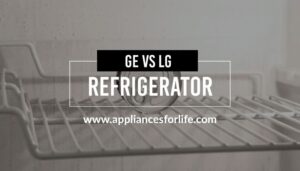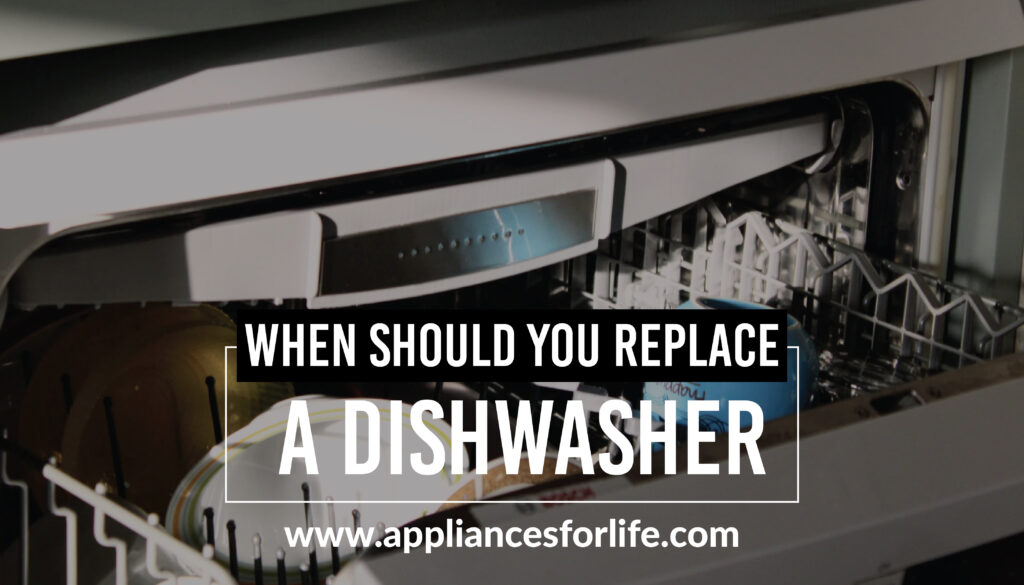- An automatic dishwasher is one of the luxuries that technology has graced us with. Before automatic dishwashers, there was no alternative to handwashing and this posed a lot of constraints. When fatigued after the hustle and bustle of the day, dishes were left undone and exposed to harmful bacteria. However, since the invention of automatic dishwashers, dishes can now be done in an incredibly large quantity and with a lot of conveniences.
- DIshwashers are built really strong, they are built to stand the test of time and sometimes frequent use. However, we all reach the point where we begin to see signs you need to replace your dishwasher. Some of these signs include water leakage, unnecessary and excessive noise, and so on. This article provides an insight into some of the signs and faults that reveal that your dishwasher is aged and needs replacement.
Some regulatory measures around the world stipulate that in order to maintain public Health standards, hospitals and many other foodservice institutions are required to clean dishes by automatic dishwashing methods. Apart from this fact, automatic dishwashing also makes dishwashing really easy and it saves time. Automatic dishwashing is done by an electric device called a dishwasher. A dishwasher is a machine used to clean dishes, cutlery, and other cookware automatically and it does this by spraying hot water, between 45 and 75 °C (110 and 170 °F), mixed with a dishwasher detergent, at the dishes. However, this temperature can be regulated and reduced to lower temperatures depending on how delicate those dishes are
Table of Contents
Toggle
Before the invention of automatic dishwashers, dishes were done manually, using the hands. However, this method of dishwashing is not completely obsolete as people in many parts of the world still do dishes with their hands. It was eventually discovered that this method could no longer be efficient for dishwashing in large quantities. This spurred several innovations to bring a solution to this problem and eventually sometime in 1850, the first mechanical dishwashing device was registered for a patent 1850 in the United States by Joel Houghton. This first dishwasher was made of wood and cranked by hand while water sprayed onto the dishes. There was no major difference between handwashing and washing with this machine since they are both manuals. Later in 1929, a domestic dishwasher with an electric motor was invented and manufactured in Europe, this was a bigger improvement from what was previously obtainable.
How Dishwasher Work
Dishwashers are machines that clean and rinse dirty dishes all by themselves. All that is to be done by a user is to load the dishes, add some dishwasher detergent, set a proper washing cycle, and turn the dishwasher on. In the process of washing, the dishwasher accomplishes a series of functions including, automatically heating up the required amount of water for a particular set, mixing it thoroughly with dishwasher detergent, and shooting the water through spray arms to get the dishes clean. After washing, the dishwasher drains the dirty water and, sprays the dishes again but with clean water this time for rinsing and drying the dishes off if the user has selected that function.
Dishwashers don’t just wash, rinse, and dry dishes automatically, they also monitor and regulate the time used to complete each cycle. A sensor has been built in this machine to regulate the length of the wash cycle by detecting water and air temperature. The moment this sensor detects excessive hotness for example it signals the timer and heating stops to avoid damaging your dishes. Another sensor can tell if the water level gets too high and activates the draining function to keep the dishwasher from overflowing. Some dishwashers even have sensors that can detect the dirtiness of the water coming off the dishes. When the water is clear enough, the dishwasher knows the dishes are clean.
The water pumped into a dishwasher is never excessive to the point of leakage, although leakage is a rare occurrence in most dishwashers because they are watertight. Due to the perfect design of a dishwasher, the water pump and spray on dishes it pressurized to the right amount. Only a small basin at the bottom of the dishwasher fills up and from this basin, the dishwasher pump propels the water up to the spray arms where it is forced out and sprayed against the dirty dishes.
The pressurized spray action on dishes forces food particles to give way to sparkling clean dishes. Once the food particles are washed off the dishes, they are either caught up in a filter where they are eventually flushed out or chopped into smaller pieces and disintegrated. After this process of disintegration, the cycle of heating water, spraying it, and letting it drip back into the pool below repeats several times.
The final cycle in a dishwashing process is usually the drying of the dishes, this cycle is however not applicable to all dishwashers. The element at the bottom of the dishwasher heats the dishwasher up from within, thereby drying up water droplets left in the machine. The necessity of this drying is highly debatable. It is possible to just leave the dishes to dry up on their own, thereby saving energy.
As demonstrated above, the washing and rinsing cycle of an automatic dishwasher is not a complicated one at all.
How do you know you need a new dishwasher
As easy as washing seems, the hustle and bustle of daily lives may make this incredibly difficult, and these a the moments when automatic dishwashers are of great value to us in the kitchen. Automatic dishwashers are a true modern-day luxury that we’ve all come to depend on, it’s hard to imagine what life would be like without this appliance and this is why we just use them non-stop without even remembering that some necessary wear and tears could bring it to a halt someday. Although repairs can be an option if you are wondering whether to repair or replace dishwasher. Repairs should be absolutely considered when the fault is mendable. But in the case where dishwasher repair cost is so exorbitant. It is just better to get a replacement. Just in case you are wondering when it is you need to change your dishwasher in order to avoid an unprecedented disappointment, below are some tips to help with that.
The Age of your Dishwasher
For most dishwashers, there is a 10-year limited guarantee, hence if yours is older than 10 years, it might be time to give it an upgrade, especially if you have a lower-end model.
Purchasing a new dishwasher may cost you some money but it will certainly save you from unnecessary future expenses. More importantly, it may even save you from some water and electricity bills. Although the ten-year cut-off mark is largely arbitrary, and very dependent on how well or frequently you clean and maintain the unit, it is a good measurement by which to assess your dishwasher. This is how to know when to replace a dishwasher
When you notice rust
Once in a while, wipe the floor underneath the dishwasher with a light-colored cloth or paper towel. If you come up with flakes of rust, that means water is leaking and getting into places it shouldn’t. It also means you want to get a new dishwasher sooner rather than later.
A few specs of rust on the outside of a dishwasher do not really count for fatal damage and may not require immediate replacement, however, if rust is noticed on the inside of the dishwasher, it may be time to get a replacement as these rusts could lead to water leakage. Apart from this, small specs of rust may find their way into washed dishes and this may be catastrophic to one’s health.
When water remains after wash
After the completion of its wash and rinse cycle, dishwater is expected to rid itself of the dirty water it is used for washing by draining it out. If however, you notice standing water inside your dishwasher after the cycle is completed, this is a sign that the dishwasher drain is clogged. Oftentimes, there is a small amount of food that has created a minor blockage. You only just need to detach the drain pipe and clean it thoroughly but if the problem persists, the drain pipe may have been ruptured and leaking. It is advisable to get a replacement in this case.
The Door Doesn’t lock
A dishwasher will not work efficiently or probably not work at all if the lid is unattached. The device is unable to run a wash cycle without its door because an attempt at this will cause some water leakage and mess your kitchen up.
Depending on the brand and model that you have, this could be a very simple and inexpensive repair. Additionally, if it’s a relatively new dishwasher, then a broken latch may even be covered by the warranty. Unfortunately, if your dishwasher is pretty old, then you may find it difficult to find the necessary parts to repair it. But before you go out looking for a new dishwasher, you should try to explore the possibility of having it fixed first.
The Dishes Are Not Hot After a Cycle
It does not matter whether you select the dry option or the quick wash cycle. Your dishes should still feel hot when they come out of the dishwasher. However, if this is not the case, there may be some concerns about the sanitary of your dishes.
Dishes washed in less than 171 degrees Fahrenheit are considered not sanitized enough. It is in agreement with this principle that the Food and Drugs Administration recommends that your dishes are washed in a “device that is capable of maintaining water at a temperature” of 171°F.
It may be argued that that guideline strictly applies to commercial dishwashing but that regulation can be a standard for respective individuals and homeowners who are looking to maintain some level of sanitation in their dishwashing.
When your dishes are Spotty or Dirty
Our major goal is when we use a dishwasher to ensure that the dishes come out clean, spotless, and sanitized to some extent. In this regard, a properly functioning dishwasher should produce an impressive result with your dishes. However, when we discover that our dishes do not come out as clean as they ought to, it may be because a user has used the wrong soap, poorly loaded the dishes or there was caked-on food. In essence, not all problems can be easily attributed to a dishwasher.
In the cases mentioned above, you do not need to change your dishwasher just yet, but you should evaluate other ways to resolve the issues. Most of the time, the problem is just the way the dishes were loaded or arranged inside the unit. However, it’s still in your best interest to try a few other solutions. Hence, during subsequent washes, you can soak your dishes to remove all food residue before moving them into your dishwasher. This way, you would have made your dishwasher’s job significantly easier. You should also evaluate the type of soap you use and probably add rinse aid to the wash cycle.
If after all that troubleshooting, the problem persists. If your dishes are still coming dirty or cloudy, then it may be a sign that the dishwasher is starting to malfunction. It may be time to consider a new unit.
When Dishwasher is leaking water and making unusual noises
You should never see water dripping out of your dishwasher unit. If this happens, make sure to handle it as soon as possible to avoid a much bigger problem. Turn off the water and immediately start to dry all surfaces. It would also be wise to use a dehumidifier or powerful fan to ensure that all moisture has been removed. You should also call a plumber a plumber to help locate where the leak is coming from.
As regards dishwasher noise-making, when your dishwasher starts producing old noises while it works, it is a clear sign that it is old and needs replacement. Note however that, the noise, in this case, is not that, arising from typical daily use.
General Dishwasher Troubleshooting
The common problem of most dishwashers is a simple inability to get the dishes clean. You may have experienced it before that after running all the cycles on your dishwasher, your dishes are still soiled. There might be stuck-on food or residue from the detergent, in which case, some prior soaking would cure. The water you may have used for washing may be hard, in which case it is just advisable you get the best dishwasher for hard water. A water pressure problem may also be the culprit. You may need to replace the water intake valve. Another common problem is mineral build-up. If your house has hard water, the mineral build-up can clog the water jets. Clear each jet with a wire or pin and run an empty load with some vinegar in the detergent dispenser once a month.
On a different note, if your dishwasher problem is the inability to properly drain, There could be a clog in the drain hose or a problem with the pump. It’s also possible that the dishwater is getting too sudsy, and sensors in the washer aren’t detecting the soap foam as water. This causes it to shut down the drain cycle too early. Just use less detergent.
FAQs
How do dishwashers work?
Imagine a pressurized discharge from a hose and an increased pressure when this discharge is slightly obstructed. That is exactly how the dishwasher pump works. It is almost like a sprinkler system installed in a dishwasher. This ‘sprinkler system’, aggressively sprays on dishes loaded into a dishwasher and makes them clean. Before the spraying, however, the dishwasher heats up the water and mixes it up with some detergent, all of which help for effective cleaning.
Is there a correct way to load the dishwasher?
Every dishwasher has its peculiar differences, hence it is important to consult your user manual for specific and tailor-made instructions but the general principles of loading a dishwasher are typically the same. Always face dishes inwards towards the center of your machine. Put larger, bulky items like pots and baking sheets on the sides or in the back, paying special attention to the path of the sprayer and the location of your dishwasher’s detergent chamber. Glasses and heat-sensitive plastics should go on the top rack
Are there items I should not wash in my dishwasher?
Yes. Items or dishes made of wood, iron, aluminum, and crystal should not be placed in a dishwasher as they can be damaged or discolored in the process of washing. Hand washing is the best fit for items and materials of that nature.
16 MINUTES
ESTIMATED TIME DESIGNING AND UPLOADING THIS ARTICLE
10 HOURS 26 MINUTES
ESTIMATED TIME RESEARCHING AND WRITING THIS ARTICLE
You Might Also Like

How Does a Cold Press Juicer Work?
Cold press juicer is one of the most efficient juicing machines and also arguably the most popular juicer. In this article, we’ll be talking about the cold press juicer and what sets it apart from the other juicing machines. Also, we’ll be looking at the

KitchenAid Hand Mixer Not Working
The KitchenAid brand has been making a positive difference in the blender/mixer market. Our KitchenAid mixer troubleshooting guide will keep you well informed on how to tackle any mixer issue your KitchenAid hand mixer is not working. If you ask anyone what appliance they use

Delicious Pressure Cooker Pork Roast For You
The Pressure’s On! Pressure cooker pork roast is a great option when you’re tired of the more time and effort demanding methods of cooking meat. Chicken is great, but having other options to choose from is even better. Using your pressure cooker to make a delicious pork roast

What to Look for when Buying a Washer or Dryer: 9 Factors to Consider for Your Perfect Laundry
If you’ve ever wondered how to choose a washer and dryer, this article will serve as a detailed guide to help you make the best purchase decision. Everything – from the different types of washers and dryers, as well as their pros and cons –

Tankless vs Regular Hot Water Heaters: Right Choice Smart Living
Traditional water heaters can deplete the hot water in the tank, leading to chilly surprises mid-shower. The Role of Water Heater: Water heaters play a pivotal role in households by providing the essential comfort of hot water for various daily activities. These devices ensure a

Air Conditioner Freezing Up And What You Can Do About It
An air conditioner freezing up can really put a dent in your budget or your emergency savings, not to mention make for a horribly uncomfortable summer. There are certain things you can do to solve the problem without having to dip too far into your

Top 3 Best Crosley Professional Refrigerators
You won’t know how good Crosley refrigerators are until you invest in one. If you’re considering getting a Crosley professional refrigerator, our review of the best Crosley professional refrigerators will help you make the best decision. Getting a good refrigerator is a big deal, and

HOW TO REMOVE STAINS FROM STAINLESS STEEL REFRIGERATOR
Having a stainless steel refrigerator is always nice. You have a super clean, simple and elegant finish that is widely regarded as the best in the market. Its shining looks, however, comes at a price. To maintain your stainless steel refrigerator’s elegant finish, you need

GE vs LG Refrigerator: Ultimate Comparison to Choose Wisely
In the appliance industry, some brands do it better than others, and that’s why the market remains one of the most competitive markets in the world. GE and LG are two of the biggest players in the appliance market. The talk of which brand does

How To Make Lemon Juice Using a Juicer in 6 Simple Steps
Once a luxury, juice extractors have now become an indispensable home appliance if one must extract the juice of any fruit. They come with a lot of features that make the tasks that are ordinarily difficult, very easy. It is so easy that, to extract

